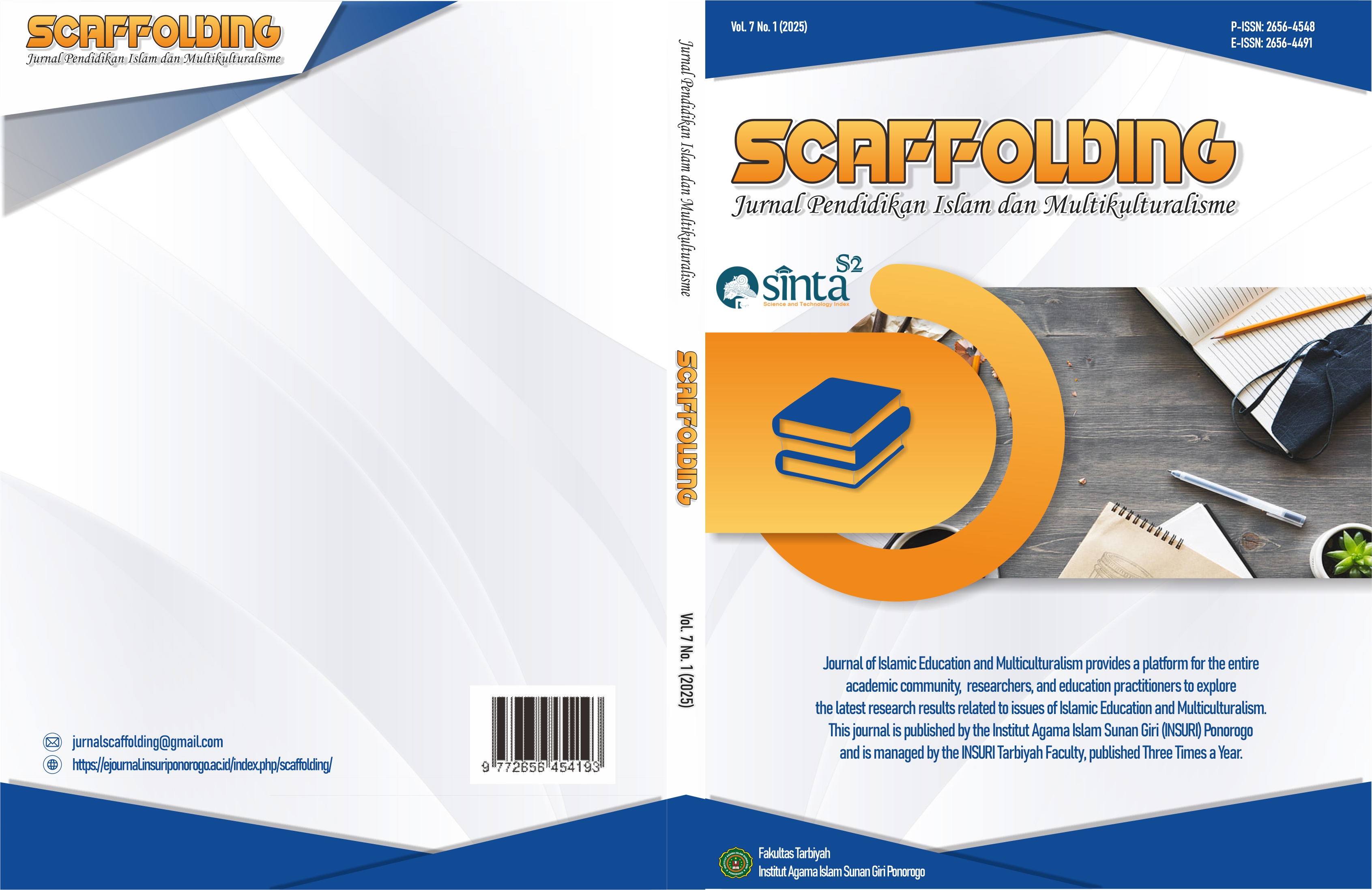Critical Analysis of the Modernisation of Madrasah Human Resource Development
DOI:
https://doi.org/10.37680/scaffolding.v7i1.6728Keywords:
Modernisation, Development, Human Resources, MadrasahAbstract
The purpose of this research is to analyse how the modernisation of HR development at MTsN 1 Padangsidimpuan. This research is a qualitative field research using a descriptive approach. Data collection instruments are observation or observation, interviews, and documentation. Research informants were the head of the madrasah, the deputy head of curriculum, the deputy head of public relations, the deputy head of student affairs, the subject teachers, and the head of administration. The analysis technique in this study adopted the stages proposed by Creswell, namely data analysis starting with data collection, then continued with data classification, namely the selection and concentration of attention on the focus being studied. The data analysis process was carried out continuously throughout the research. The results of this study are the development of human resources (HR) at MTsN 1 Padangsidimpuan, carried out through several approaches that support each other. The efforts made include training, mentoring, MGMP (Subject Teacher Consultation), and the implementation of On-the-Job Training (OJT). Each approach has an important role in improving the competence and professionalism of educators and education personnel in this school. Through regular training, mentoring, subject teacher meetings (MGMP), and on-the-job training (OJT), educators in this madrasah can improve their pedagogic competence and professionalism. As a result, the quality of teaching becomes more innovative, interactive, and relevant to the times. This approach also strengthens collaboration among teachers and improves school management, creating a dynamic and quality educational environment.
Downloads
Published
How to Cite
Issue
Section
License
Copyright (c) 2025 Neliwati Neliwati, Asriana Asriana, Muhammad Asroi, Mulia Nasution

This work is licensed under a Creative Commons Attribution-NonCommercial 4.0 International License.
Authors who publish with this journal agree to the following terms:
Authors retain copyright and grant the journal right of first publication with the work simultaneously licensed under a Creative Commons Attribution-NonCommercial 4.0 International License that allows others to share the work with an acknowledgement of the work's authorship and initial publication in this journal.
Authors are able to enter into separate, additional contractual arrangements for the non-exclusive distribution of the journal's published version of the work (e.g., post it to an institutional repository or publish it in a book), with an acknowledgement of its initial publication in this journal.
Authors are permitted and encouraged to post their work online (e.g., in institutional repositories or on their website) prior to and during the submission process, as it can lead to productive exchanges, as well as earlier and greater citation of published work.



